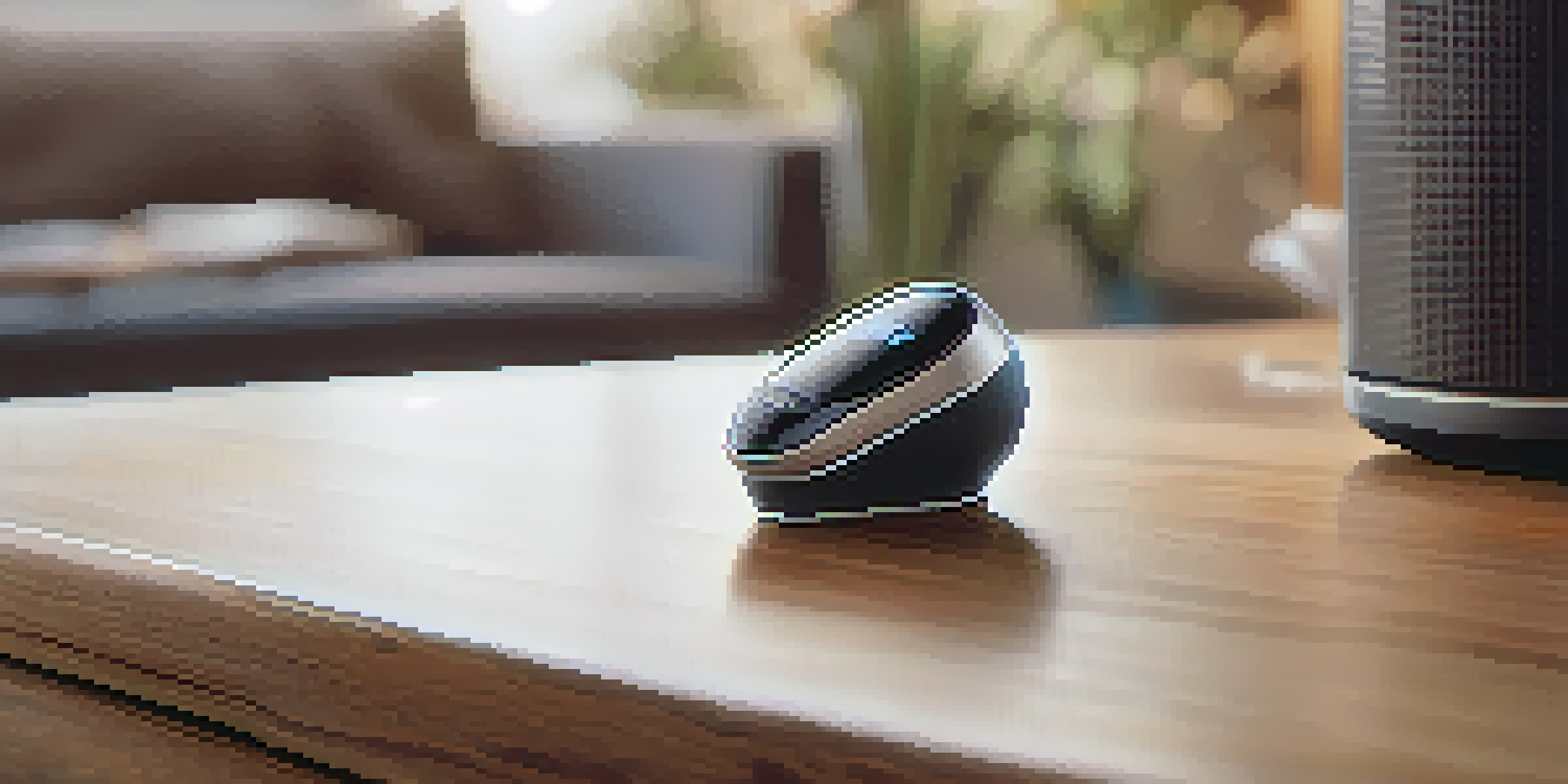Hearing Aids and Bluetooth: Enhancing Sound Accessibility

Understanding Hearing Aids: A Brief Overview
Hearing aids are small electronic devices designed to amplify sound for individuals with hearing loss. They work by converting sound waves into electrical signals, which are then amplified and sent to the ear. With advancements in technology, hearing aids have evolved significantly, becoming more discreet and effective in improving hearing.
The ear is the avenue to the soul.
Many modern hearing aids come equipped with various features, such as noise reduction and directional microphones, which help users focus on specific sounds, like conversations. This is particularly beneficial in noisy environments, allowing users to engage more fully in social interactions. The goal is to provide a more natural listening experience, making it easier for individuals to connect with the world around them.
As technology continues to advance, integrating Bluetooth capabilities into hearing aids has become a game-changer. This innovation not only enhances sound accessibility but also offers a seamless way for users to connect their hearing aids to other devices, improving their overall listening experience.
The Role of Bluetooth in Hearing Aids
Bluetooth technology allows hearing aids to wirelessly connect to smartphones, tablets, and other devices, providing users with more control over their listening experience. This connection enables users to stream phone calls, music, and other audio directly to their hearing aids, eliminating the need for additional accessories. Imagine being able to enjoy your favorite song or take a call without struggling to hear through traditional speakers.

Additionally, Bluetooth connectivity allows for remote adjustments to hearing aid settings through dedicated apps. This means users can easily make changes to volume, program settings, and more—all from their smartphone. It’s a thoughtful way to ensure that hearing aids can adapt to various environments without the need for manual adjustments.
Bluetooth Transforms Hearing Aids
Bluetooth technology enhances the functionality of hearing aids by allowing seamless connectivity to smartphones and other devices.
Moreover, Bluetooth technology enhances the overall user experience by providing notifications and alerts directly to the hearing aids. For instance, users can receive text message alerts or reminders in a way that is unobtrusive and user-friendly, ensuring they stay connected without feeling overwhelmed.
Benefits of Bluetooth Hearing Aids
One of the most significant benefits of Bluetooth hearing aids is the enhanced sound quality. Streaming audio directly to hearing aids significantly reduces background noise, allowing users to focus on what they want to hear. This feature is especially valuable in crowded places like restaurants or concerts, where distractions can make it hard to enjoy conversations or performances.
Technology is best when it brings people together.
Bluetooth hearing aids also promote better connectivity in daily life. Users can seamlessly switch between listening to music, taking phone calls, and participating in video conferences without having to remove their hearing aids. This versatility adds a level of convenience that many users find empowering, as they can engage in a variety of activities without compromising their hearing.
Furthermore, the integration of Bluetooth technology can lead to improved social interactions. By eliminating the barriers that hearing loss can create, users can feel more confident in conversations and social settings. This newfound confidence can enhance relationships and foster a greater sense of belonging, making social experiences more enjoyable.
Choosing the Right Bluetooth Hearing Aid
When selecting a Bluetooth hearing aid, it's essential to consider individual lifestyle needs. Different models offer varying features, so users should assess what aspects matter most to them—whether it’s streaming capabilities, battery life, or ease of use. Consulting with an audiologist can provide valuable insights into which options may suit them best.
It's also important to check compatibility with devices. Not all hearing aids connect with every smartphone or tablet, so verifying that your devices work together is crucial. Many manufacturers offer compatibility lists to help users make informed decisions, ensuring that the technology will enhance their daily experiences.
Improved Sound Quality Benefits Users
Streaming audio directly to hearing aids reduces background noise, enabling users to focus on desired sounds in challenging environments.
Finally, consider the comfort and fit of the hearing aids. Since these devices are worn throughout the day, finding a model that feels comfortable and secure is vital. Many manufacturers now offer customizable options to ensure that users can wear their hearing aids confidently and comfortably.
Maintaining Your Bluetooth Hearing Aids
Keeping Bluetooth hearing aids in top condition requires regular maintenance and care. It’s advisable to clean them daily to prevent wax buildup and ensure optimal performance. Many users find that using a soft, dry cloth is sufficient to keep their devices clean and functioning well.
Additionally, checking the battery life regularly is essential for uninterrupted use. Many modern Bluetooth hearing aids come with rechargeable batteries, which can simplify upkeep. However, if you’re using disposable batteries, keeping spares on hand can prevent inconvenient situations when the battery runs low.
Lastly, users should stay updated on software upgrades for their hearing aids. Manufacturers often release updates that can enhance performance and fix bugs. Regularly checking for these updates can help users get the most out of their technology and ensure their hearing aids are functioning at their best.
The Future of Hearing Aids and Bluetooth Technology
Looking ahead, the future of hearing aids integrated with Bluetooth technology is promising. Innovations in artificial intelligence are already paving the way for smarter devices that can learn from users' preferences and automatically adjust settings based on their environment. This could lead to a more personalized hearing experience that adapts seamlessly to individual needs.
Moreover, as technology continues to advance, we can expect even greater connectivity options. Imagine being able to sync hearing aids with smart home devices or wearables for a truly integrated experience. This level of connectivity could enhance accessibility and convenience, making daily life easier for users.
Personalized Hearing Aid Selection
Choosing the right Bluetooth hearing aid involves considering lifestyle needs, device compatibility, and comfort for optimal daily use.
Ultimately, the combination of hearing aids and Bluetooth technology represents a significant step forward in enhancing sound accessibility. As more individuals embrace these devices, we can look forward to a future where hearing loss no longer limits social interaction and engagement in everyday activities.
Conclusion: Embracing Sound Accessibility
In conclusion, Bluetooth technology has revolutionized the way we think about hearing aids. By enhancing connectivity and sound quality, it empowers users to engage more fully with the world around them. Whether it's streaming music or participating in a conversation, these advancements make a significant difference in everyday life.
The journey towards sound accessibility is ongoing, and as technology continues to evolve, we can expect even more innovations to assist those with hearing loss. By staying informed and selecting the right tools, users can reclaim their auditory experiences and enjoy a richer soundscape.

So, if you or someone you know is navigating hearing loss, consider exploring the world of Bluetooth hearing aids. With the right support and technology, enhanced sound accessibility is within reach, opening up a world of possibilities.